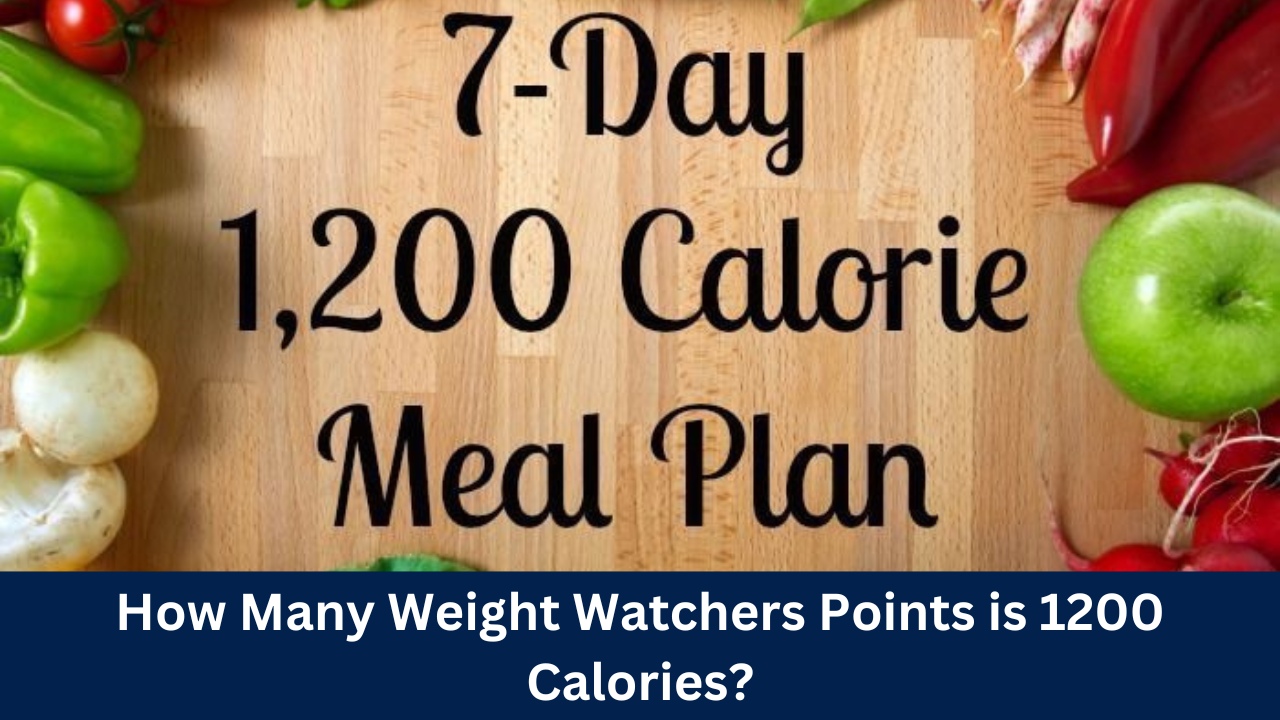How Many Weight Watchers Points is 1200 Calories?

When embarking on a weight-loss journey, it’s crucial to understand the relationship between calories and Weight Watchers points. This guide will help you navigate the intricacies of the Weight Watchers system, enabling you to make informed choices about your diet while aiming for a healthy and sustainable weight loss.
Understanding Weight Watchers Points vs. Calories
The Weight Watchers (WW) system is designed to simplify calorie counting by assigning points to foods based on their calorie and nutrient content. This approach helps you focus on the quality of the food you consume, rather than just the quantity of calories.
What are Weight Watchers Points?
Points are calculated considering several factors:
- Carbohydrates
- Fiber
- Protein
- Fat
This system encourages healthier eating habits by making more nutritious foods lower in points. For example, an apple and a chocolate chip cookie might both have around 95 calories, but the apple has 0 points while the cookie might have 2 points. This difference promotes choosing foods that provide more nutritional value.
Why 1200 Calories?
Eating at least 1,200 calories per day is essential, especially for women, to avoid metabolism slowdown. Consuming fewer calories can lead to nutrient deficiencies and a decrease in energy levels.
Points Allocation: Customizing Your Plan
Your daily points allotment depends on several factors:
- Current weight
- Age
- Gender
- Height
The minimum daily points are typically 26, with an additional 49 weekly points for flexibility. You can also earn more points through physical activity.
Personalized Points Allocation
Weight Watchers takes into account your individual characteristics to tailor your daily and weekly points, ensuring you get enough nutrition while still progressing toward your weight-loss goals.
Zero Point Foods: Your Best Friends
Certain foods are assigned 0 points to encourage you to eat more of them. These include:
- Fresh fruits
- Non-starchy vegetables
These foods are low in calories but high in water and fiber, which help you feel full. Other zero-point foods include:
- Broth
- Diet soda
- Sugar-free gelatin
- Hot sauce
- Reduced-calorie fruit-flavored ice pops
- Ketchup
- Kimchi
- Mustard
- Pickles
- Pico de gallo
- Salsa
- Seltzer
- Sauerkraut
- Steak sauce
- Soy sauce
- Vinegar
These items add flavor and variety to your diet without adding points.
Balancing Points and Calories
While the WW points system simplifies calorie counting, understanding the relationship between points and calories can help you make better food choices.
Also Read: How Did Kim Gravel Lose Weight? : A Detailed Journey
Example of Points and Calories Balance
- Low-calorie, high-nutrient foods: Fresh fruits and non-starchy vegetables often have 0 points but can still contain calories.
- High-calorie, low-nutrient foods: Foods like cookies or chips may have high points due to their fat and sugar content, even if the calorie count is similar to healthier options.
This balance helps steer you towards nutrient-dense foods that support weight loss and overall health.
Incorporating Flexibility: Using Weekly Points
Weight Watchers allows for flexibility through weekly points, which you can use as needed. This flexibility helps you manage:
- Social events
- Cravings
- Unplanned indulgences
Strategies for Using Weekly Points
- Save for Special Occasions: Plan ahead and save your weekly points for events or treats.
- Daily Treats: Use a small portion of your weekly points each day for a consistent treat.
- Activity Points: Earn extra points through increased physical activity, allowing for more flexibility in your diet.
Maintaining a Healthy Balance
The WW system promotes a balanced approach to weight loss by emphasizing:
- Sustainable habits
- Balanced diet
- Regular exercise
Benefits of the Weight Watchers Approach
- No Forbidden Foods: Unlike some diets, Weight Watchers doesn’t ban any specific foods, making it easier to stick to in the long term.
- Slow and Steady Weight Loss: Encourages a gradual weight loss of 1-2 pounds per week, which is more sustainable and healthy.
- Encouragement of Physical Activity: Promotes regular exercise, which not only helps in weight loss but also improves overall health.
Conclusion: Your Path to Success with Weight Watchers
By understanding and utilizing the Weight Watchers points system, you can effectively manage your calorie intake while focusing on the nutritional value of your food. This approach helps you maintain a healthy metabolism, enjoy a balanced diet, and achieve your weight-loss goals.




